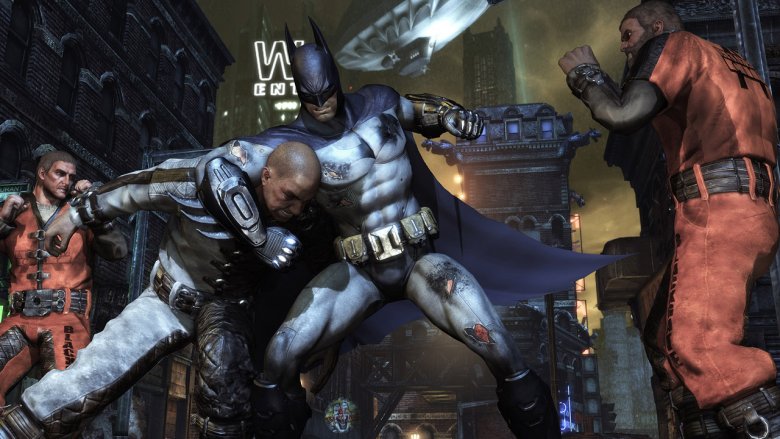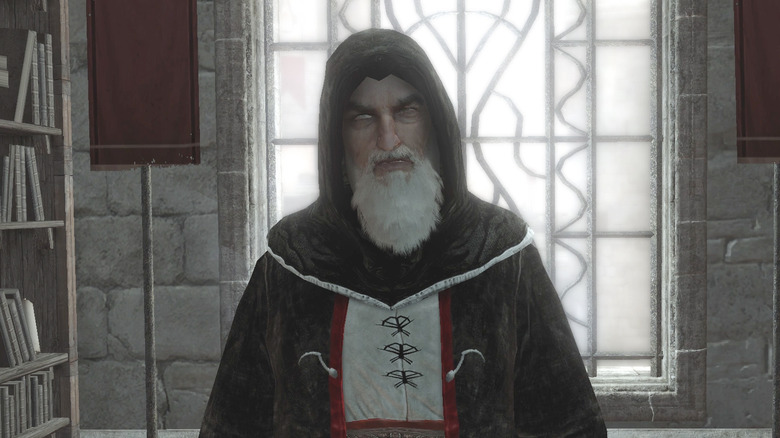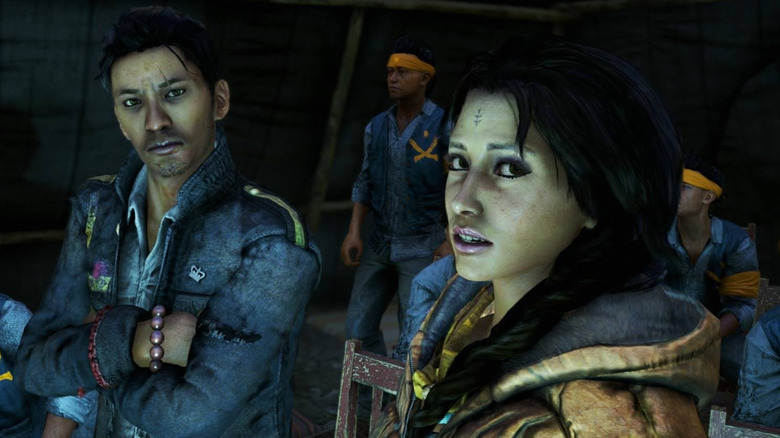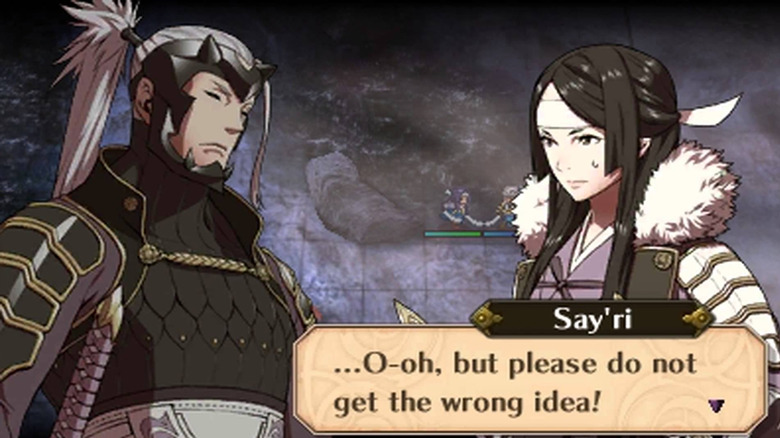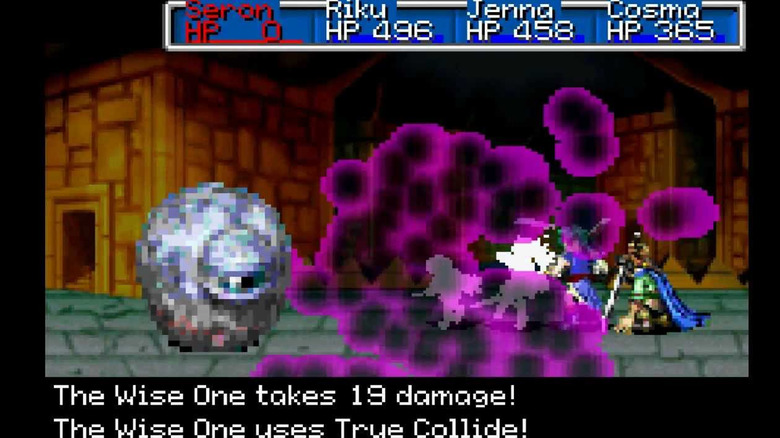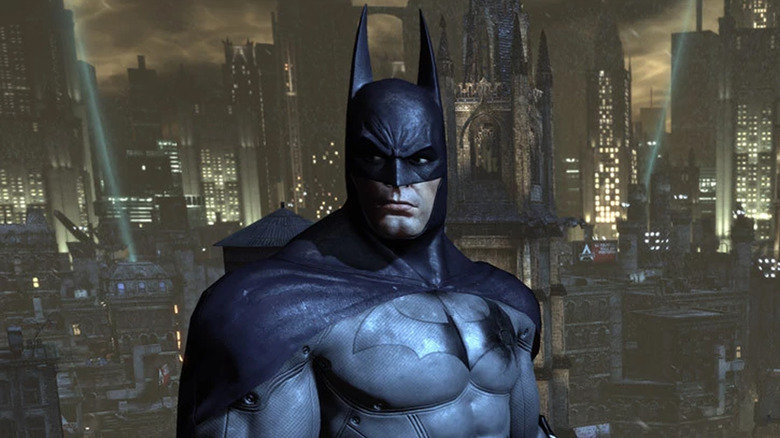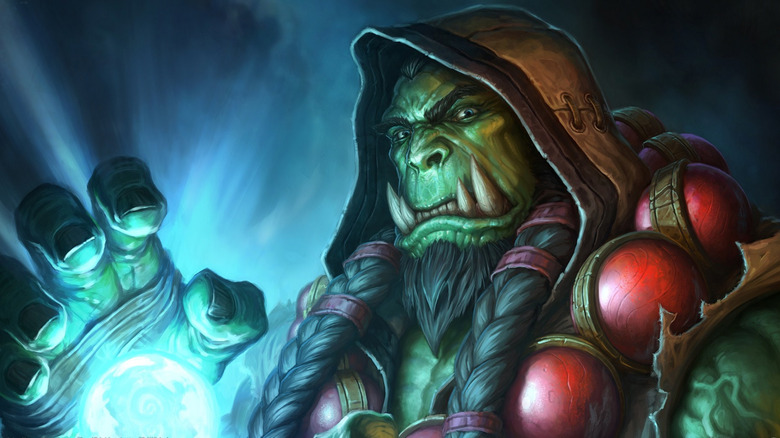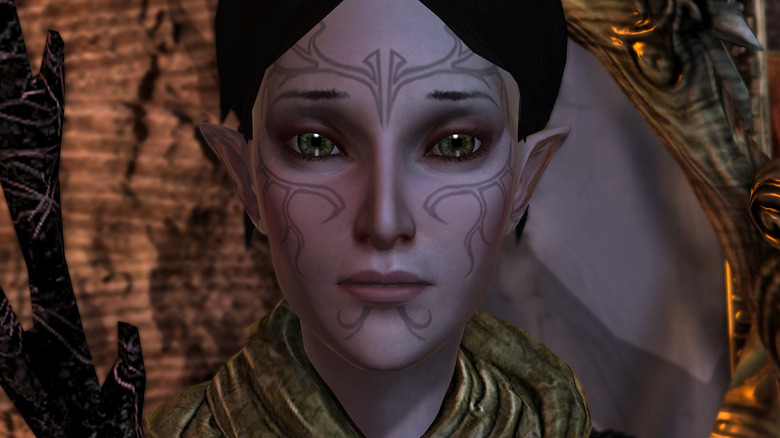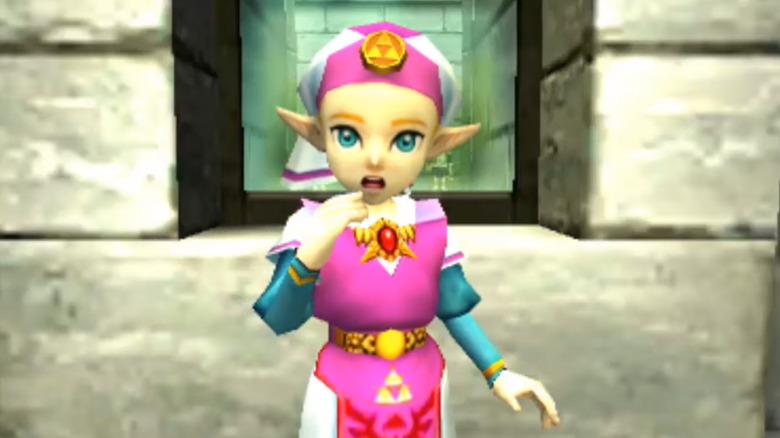When The Good Guys In Video Games Were Actually Wrong
Many video games have an obvious protagonist—one who fights evil, upholds justice, and makes things right in the world again. But sometimes players encounter a more complicated or imperfect "hero" during their gaming adventures. These heroes may have faulty logic, jump to conclusions, or operate on incorrect assumptions. Some good guys go astray when an obsession leads them to do bad things, while others were actually bad all along. Yet others are stubborn, naive, or have other weaknesses that have caused them to make tragic mistakes. No matter the personal flaw, having a good guy go wrong adds depth to what's usually a pretty one-dimensional character. Here are our favorite examples of times when the "good guys" in video games were completely wrong.
Assassin's Creed - Al Mualim
In the original Assassin's Creed, you experience the "genetic memories" of Altaïr Ibn-La'Ahad, a member of the Assassin Brotherhood during the late 10th century. After botching an important mission, Altaïr must redeem himself by assassinating nine targets picked by his master, Al Mualim. As you begin to take them out, you learn they all belonged to the Templar Order. The Templars were trying to find the Apple of Eden—an ancient relic full of mysterious and godlike power.
Once you've eliminated all nine targets, you learn that your mentor Al Mualim isn't one of the "good guys" at all. Not only is he collaborating with the Brotherhood's sworn enemies, but he's been using Altaïr to take out the competition and betray these Templar allies and acquire the Apple of Eden. Al Mualim uses his newfound powers to take control of the Brotherhood's local headquarters of Masyaf. After successfully storming the castle, you must confront your former mentor and find a way to stop his reign of terror.
Far Cry 4 - Amita and Sabal
At the start of Far Cry 4, King Pagan Min of Kyrat appears to be the clear-cut bad guy, while the Golden Path insurgency leaders Amita and Sabal are portrayed as heroes. However, after working for the Golden Path, you soon learn that these feuding leaders are just as bad as Pagan Min—or worse. The choices you make during the game swing the balance of power within the Golden Path to either Amita or Sabal. Their rivalry continues until the game's third act, when you must pick one to lead the Golden Path.
Amita turns the country into a state-sponsored drug cartel, complete with opium slaves and an army of child soldiers. She even kills her eight-year-old sister Bhadra to end the girl's influence as a Kyrati religious icon. But if you picked Sabal to lead, things don't go much better: he establishes a theocracy backed by firepower. He executes Amita's supporters, represses all progress, and forces the people of Kyrat to worship Bhadra as a goddess. Any who don't comply are brutally killed. Pagan Min may be the game's villain, but when compared to these two, he doesn't seem that bad after all...
Fire Emblem Awakening - Say'ri
In the second act of Fire Emblem Awakening, you meet the skilled swordswoman Say'ri, a princess from the small country of Chon'sin. Her home fell to the ambitious Emperor Walhart, and Say'ri eventually reveals that her brother Yen'fay sided with the Emperor and became one of his generals. Although she doesn't understand her brother's actions, Say'ri vows that she will one day kill Yen'fay for his betrayal. She joins your party as you search for a way to stop Walhart, and Say'ri eventually gets her chance to confront Yen'fay on the battlefield.
Yen'fay is obviously reluctant to attack his sister and her new allies. If Say'ri lands the killing blow on her brother, she asks why he went so easy on her. Yen'fay is determined to take his secrets to the grave, saying only, "You have found strong comrades. I no longer need fear for you...I die in peace." After Yen'fay dies, Walhart's advisor Excellus makes an appearance to taunt Say'ri and reveal the horrible truth: Yen'fay only sided with the Emperor to protect his little sister. Excellus had vowed to kill Say'ri if the Chon'sin prince didn't comply and join the Emperor's forces. Naturally, Say'ri reacts with shock, horror, and despair. Not only was her anger towards her brother entirely misplaced, but she actually killed him based on those false assumptions.
Star Trek Online - Zelle and T'nae
In one Star Trek Online mission, two of the "good guys" make you commit some pretty horrible deeds in the name of Starfleet. At the start of this infamous quest, Admiral Zelle orders you to attack a Romulan base that's allegedly manufacturing banned weapons. After you arrive, it soon becomes obvious that the base is a medical facility where the personnel are working on ways to defend against the genocidal aliens known as the Undine. You kill all of the medical crew anyway, and the Romulan commanding officer accuses you of being in league with the violent shapeshifting aliens.
You realize you've been duped when Admiral Zelle reverts back to her natural Undine form. Although you defeat her, she transforms again and escapes. Back at your base, Admiral T'nae tells you to keep quiet about Zelle and the slaughter at the Romulan facility. This storyline was originally meant to be part of a three-episode arc, but the other parts were never made. As a result, completing this quest effectively forced you to commit war crimes and then engage in a Starfleet coverup. Star Trek Online players were so upset by the mission that it was eventually removed from the game entirely.
Golden Sun: The Lost Age - The Wise One
At the beginning of the first Golden Sun game, the powerful Elemental Stars have been stolen. A benevolent godlike guardian called The Wise One sends you on a mission to stop the perpetrators from activating these powerful artifacts. The deity claims that the thieves plan to release the Golden Sun's power of Alchemy, causing worldwide upheaval, conflict, and strife. While you manage to defeat the bad guys at the end of the game, your quest continues in the sequel Golden Sun: The Lost Age as you pursue their accomplices.
In The Lost Age, it becomes clear that The Wise One hasn't been completely truthful with you. In fact, the world will decay without Alchemy—an important detail that The Wise One failed to mention before. When you decide to help activate the Elemental Stars, The Wise One summons a giant three-headed dragon in a final attempt to stop you. After you slay the dragon, the horrible truth is finally revealed: the three heads of the dragon were actually your party characters' parents, transformed by The Wise One. You eventually learn that the god just wanted to test your mettle before Alchemy is unleashed. Maybe The Wise One could have found a way to do that without killing your parents.
Batman: Arkham City - Batman
Batman doesn't kill–everyone knows that. Well, except for the occasional criminal who doesn't survive their encounter with The Caped Crusader. Okay, so Batman sometimes kills—but only the bad guys, right? Wrong. In the Arkham series of games, Batman's beat-em-up sprees have been the subject of much ethical analysis. GamesRadar even brought in an actual doctor to weigh-in on the potential lethality of Batman's attack M.O. in Arkham Knight. In addition to the innumerable henchman, villains, asylum patients and other baddies you beat up, Batman's Arkham era includes killing at least one innocent victim: Harley Quinn's unborn baby.
In one Arkham City encounter, you beat Harley Quinn senseless. Later in the game, you find an ominous Easter egg in Harley's room, when you notice a positive pregnancy test lying on the floor. This discovery even triggers a special end-credit scene featuring Harley singing "Hush, little baby." If you revisit her room later in the Harley Quinn's Revenge DLC, the floor is littered with pregnancy tests — all negative. While many fans believe the first pregnancy test must have been a false-positive, it seems just as likely that the Bat caused Harley Quinn to miscarry—maybe when he threw her into that wall. At any rate, Batman might want to rethink this whole "beat the crap out of bad guys" thing, or at least get over his moral superiority complex.
Final Fantasy Tactics Advance - Marche
In Final Fantasy Tactics Advance, life hasn't been too kind lately for Marche, the game's protagonist. His parents just divorced and his little brother Doned is confined to a wheelchair. Things are just as bad for Marche's friends. Ritz is teased relentlessly by bullies, while Mewt's mother died and his father became an alcoholic. One night before bed, the children read an ancient magical book. When Marche awakens, he is alone and the world has been transformed into the fantastical realm found in the book. Marche sets out to find his companions and a way back home.
Even after Marche destroys the crystals holding the magical world together, things don't go back to normal. This is because all of Marche's friends wish to remain in the fantasy realm—and why shouldn't they? Here, nobody is bullied and their parents are all alive and happy. Even Doned is healthy and can walk again. Despite knowing that their "real" lives are much worse, Marche forges ahead. By the end of the game, you're not even sure if he's the good guy because of the awful things he does to convince his friends. He bribes them, attacks them, and guilt-trips them to get his way. He lies to Doned, telling his little brother that he'll still be able to walk after they go home. Finally, Marche kills Mewt's mother—effectively making his friend's fantasy life just as bad as his real one. What the hell, dude?
World of Warcraft - Thrall
In World of Warcraft, Warchief Thrall's decision to leave Garrosh Hellscream in charge of the Horde was one of the worst ideas in the history of this franchise's complex lore. Thrall spent much of his Orcish youth as a "pet" to a human lord. He eventually escaped and ended up in an internment camp—where he met Grom Hellscream. Before his death, Grom taught Thrall what it really meant to be an Orc. Thrall later became a powerful Shaman, freed his people, and united many "outcast" races by joining them to the Horde. When Thrall later met Grom Hellscream's son Garrosh, he brought the troubled young Orc back to the capital city of Orgrimmar and made him a trusted lieutenant.
After the world-shattering dragon Deathwing returned, Thrall had to put aside his duties as Warchief in order to help save Azeroth. He chose Garrosh to lead the Horde in his absence...and things went downhill from there. After Thrall left, Garrosh expelled many of the new Horde races from Orgrimmar, dropped the Warcraft equivalent of a nuke on a city, and corrupted an entire continent with the tainted remains of an Old God. Thrall eventually returned and cast down Garrosh in the Siege of Orgrimmar, but the damage caused by Hellscream—and Thrall's bad decisions—will no doubt last generations.
Dragon Age II - Merrill
Sometimes stubbornness will cause a good guy to make bad choices. In the 2011 RPG Dragon Age II, one of your companions gets you involved in her extremely questionable decisions. The elven mage Merrill is determined to cleanse the taint from the shattered fragment of the magical mirror she possesses—even turning to blood magic to aid her efforts. She hopes that restoring the mirror will save her people from destruction. Her actions cause her clan to turn against her, and she joins your party instead of staying in her mountain home.
In the quest chain "A New Path," Merrill decides to ask a pride demon to help fix the mirror. Horrified by the path Merrill has chosen, the Dalish Keeper Marethari tries to stop her and ends up being possessed by the malignant spirit. To purge the demon, you and Merrill must kill Marethari. Even after causing the death of her own clan's leader, Merrill doesn't give up on her quest to restore the mirror—proving that obsessions can be extremely dangerous, even for the good guys.
The Legend of Zelda: Ocarina of Time - Zelda
Princess Zelda may be the mortal incarnation of a goddess, but that doesn't make her infallible. In The Legend of Zelda: Ocarina of Time, Zelda's decisions lead to the destruction of both the Sacred Realm and of Hyrule itself. To stop the evil Ganondorf, Zelda instructs Link to collect all the artifacts needed to open the Sacred Realm. Unfortunately, Zelda's plan has a fatal flaw. The 10-year-old Link is too young to be the Hero of Time, so he's frozen in time between the worlds. This allows Ganondorf to enter the Sacred Realm, claim the Triforce of Power, and wreak havoc unchecked for seven years.
Zelda makes another major miscalculation at the end of Ocarina of Time. She sends Link back in time to his childhood, hoping he can prevent Ganondorf from ever rising to power. Unfortunately, this causes a schism in Hyrule's timeline forever. In Link's childhood timeline, he goes on to battle Ganondorf in Majora's Mask, Twilight Princess, and Four Swords Adventures. But in Zelda's timeline, her plan has left Hyrule without a Hero of Time. This causes the majority of Hyrule's population to die in a Great Flood before the beginning of The Wind Waker. So much for divine wisdom.

